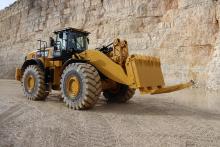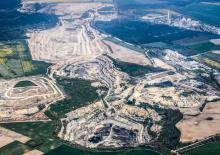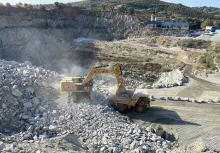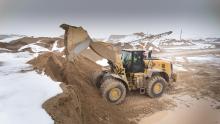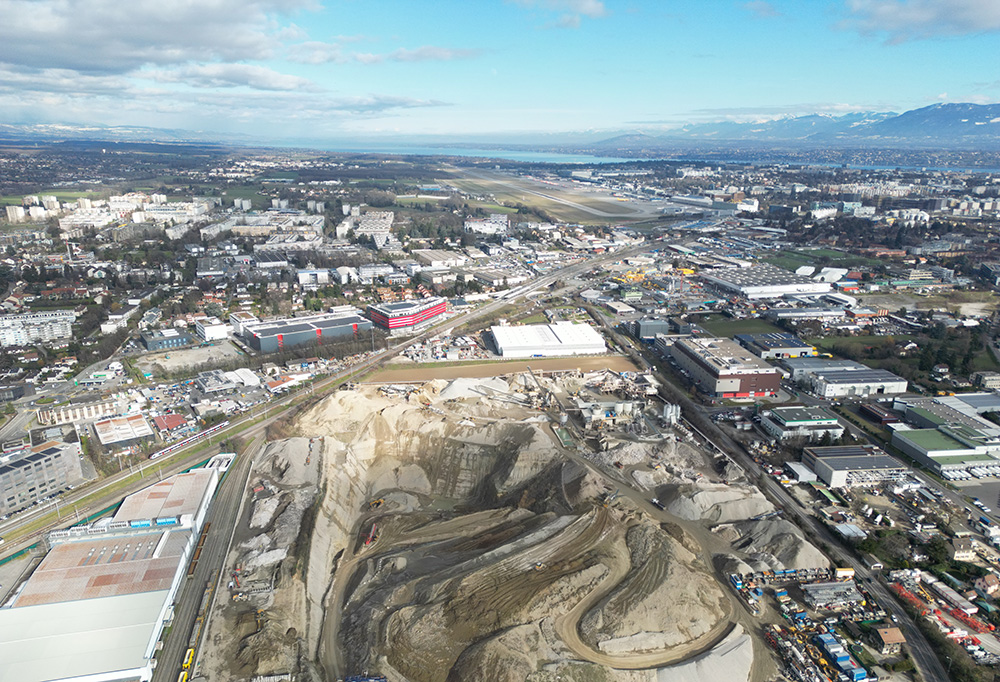
Cost control and sustainability are vital aspects of any modern quarrying business. So, acquiring an aggregate handler is a savvy move. The purchase is paying off handsomely for ambitious and environmentally-minded concrete, gravel and sand product supplier GESA when you calculate the forecasted annual fuel savings of the company’s 2022-purchased Cat 982 XE wheeled loader. Supplied by Avesco, Caterpillar’s Switzerland dealer, the machine is set to save GESA 12,000 litres of fuel worth €24,000 a year based on 2,000 hours of operation, compared to the firm’s already highly productive and efficient Cat 982M wheeled loader.
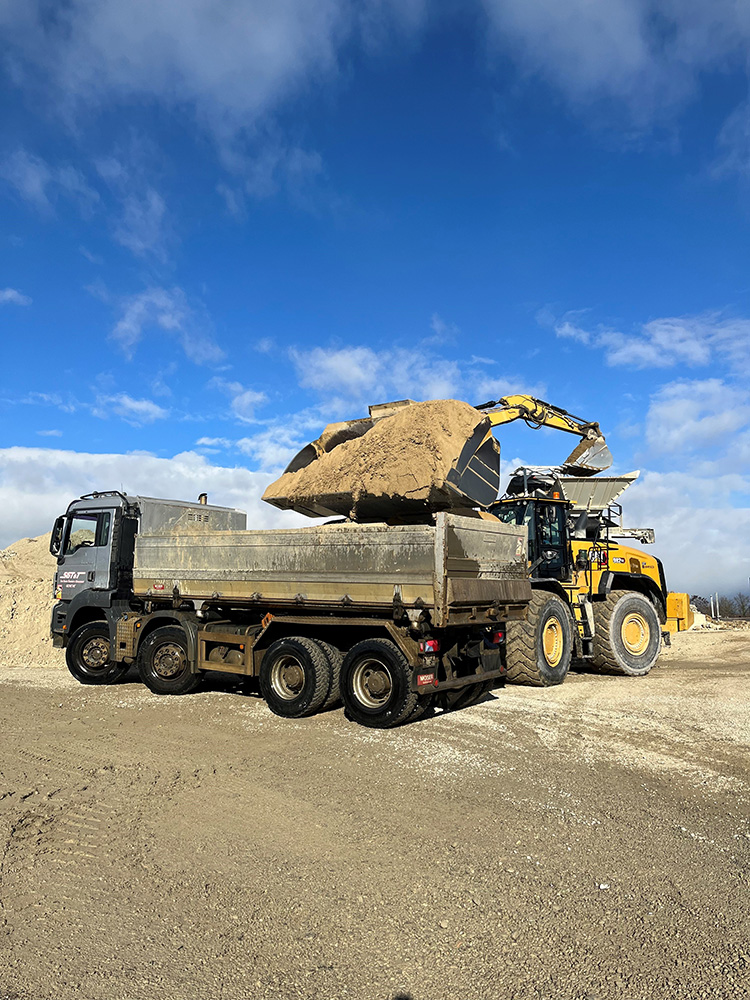
Hugo Carambola was operating the Cat 982 XE, feeding gravel material into awaiting trucks, when Aggregates Business visited the GESA Montfleury gravel pit site in Vernier, a suburb of Geneva, in early February. “It is easier to operate and quicker than the previous loader I was operating,” he says. “It gets through a lot less fuel, and I like the rim pull adjustment setting, which can give the loader better traction. I push a button and gain more power! The 982 XE’s cabin is also much more comfortable, with more lumbar support. It also has four cameras fitted to it, compared to two on my previous loader. That makes it safer. I am very happy with the machine.”
The Cat 982 XE is part of GESA’s 34-strong premium machine fleet on the site, helping to treat 500,000 tonnes of material per year. Other Cat models deployed by the company include 966M XE, 972M XE, and 982M wheeled loaders and four Cat 730/745 articulated dumpers, a D7E electric drive dozer and 324E, 329D, 330L, 352F crawler excavators as well as a 302 CR and a 301.8 mini excavator. The site also has five Cat gensets to allow GESA to produce its own electricity, as the public grid cannot meet the firm’s required power demand.
The non-Cat fleet lineup ranges from a small Volvo mini to two twenty-tonne excavators, one 32-tonne articulated dumper, and crushing and screening plants from Finlay and Swiss manufacturer Gipo, the latter featuring Cat 15-litre diesel engines. GESA produces its concrete products with Liebherr concrete batching plants.
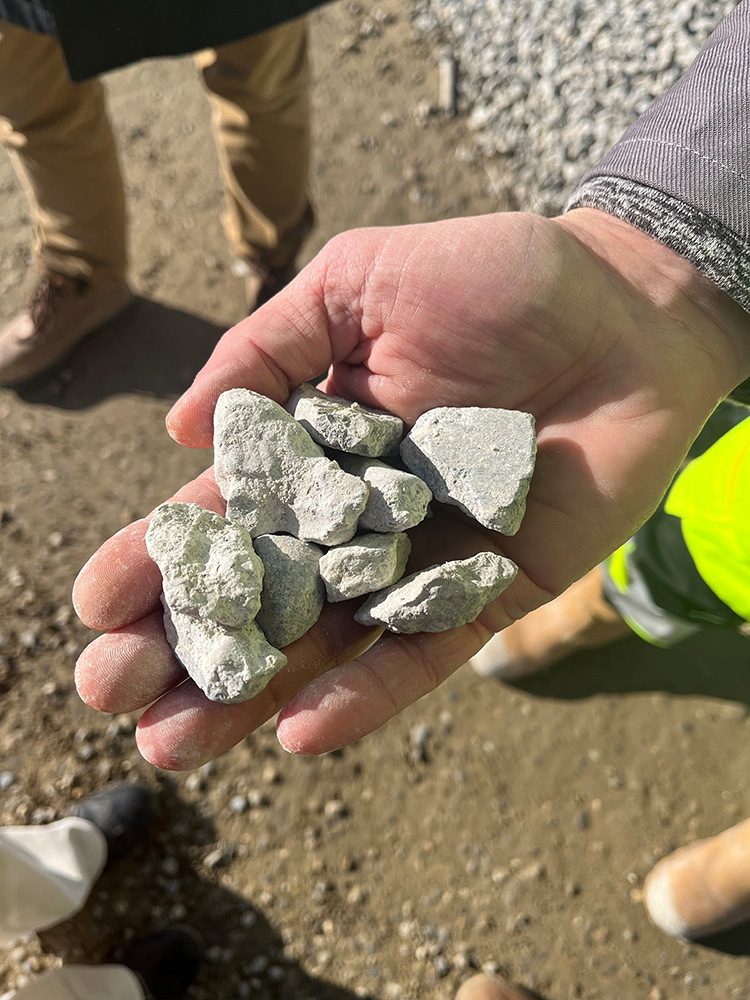
GESA’s Cat machine fleet is well-maintained under a Cat CVA (customer value agreement), serviced through Avesco. Close machine-condition monitoring (CM) is also coordinated by Avesco, which supplies GESA with a daily CM report of each machine stipulated and analysed by Avesco CM specialists. Based on the results, Avesco works with GESA to generate further machine productivity and efficiency gains, schedule preventative maintenance, or swiftly tackle any operational issues. The Cat 982 XE now has an extended service interval of 1,000 hours, compared to the 500 hours service interval of the 982M. This leads to significant maintenance cost savings and increased scheduled machine availability.
Run by 45 employees, GESA’s Montfleury gravel pit runs nine hours a day, Monday to Friday. Material is mined at depth and then processed and washed. Initially, a pit was quarried on the northeast side from 2001 to 2010, excavated to a depth of 50 metres. It provided gravel and sand (essential constituents of building materials) and was then filled with non-polluting material from earthworks and dry sludge from washing mineral materials.
Presently, there is a huge pile of gravel and sand, as well as an area for the recovery of excavated building materials and the pre-washing tower. A large hole on the site is gradually being filled in from the southwest while the Montfleury’s northeast flank is being extracted. This temporary hole will be used as an industrial area in a few years’ time.
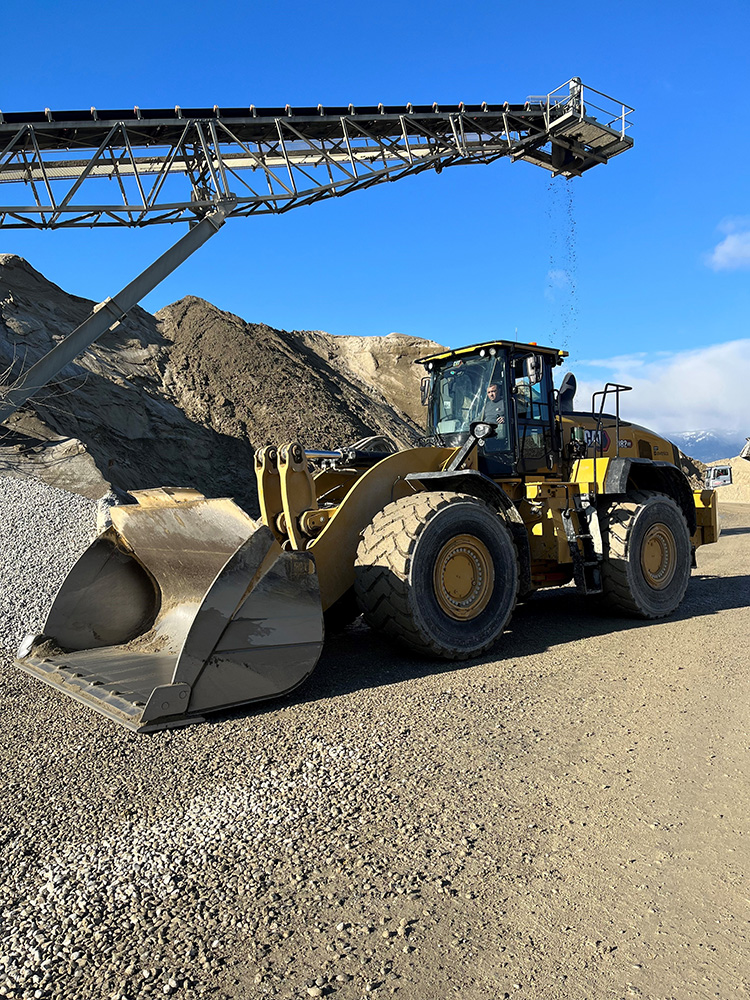
The gravel pit’s southeast side contains the production facilities for crushing, grinding, screening and washing. A water-treatment plant for washing materials (water used in a closed circuit) occupies the site’s centre with its silos, sludge presses and settling tanks. Next to it, a treatment plant for geothermal drilling sludge, concrete-plant washing residues, and other materials has been installed.
GESA performs its own regular drone flights for stockpiles, haul roads and other quarry site analysis. As the company’s drone only weighs 250g, no special authorisation is needed, despite Montfleury’s close proximity to a busy Geneva airport.
The growth in GESA’s recycling of materials from Geneva construction sites and the recycling of locally supplied demolition rubble means less traditional quarrying is required for GESA’s mineral products. The Montfleury gravel pit’s hole is only slowly being filled, with 80% of the reclaimed concrete, demolition rubble and other delivered deposits recyclable, leaving only 20% of unusable material for landfill.
Before Aggregates Business’s tour of GESA’s Montfleury site, David Suppliciau, chief of projects for GESA’s parent company, Gestrag, a civil engineering business, describes GESA’s eye-catching plans to extend materials processing at the site. “We have around one million m³ of material deposits that we can still extract at our current site and have successfully applied to the local authorities to build a tunnel under a road to allow us to get to a new extraction site. We plan to start extracting materials there from July this year.”
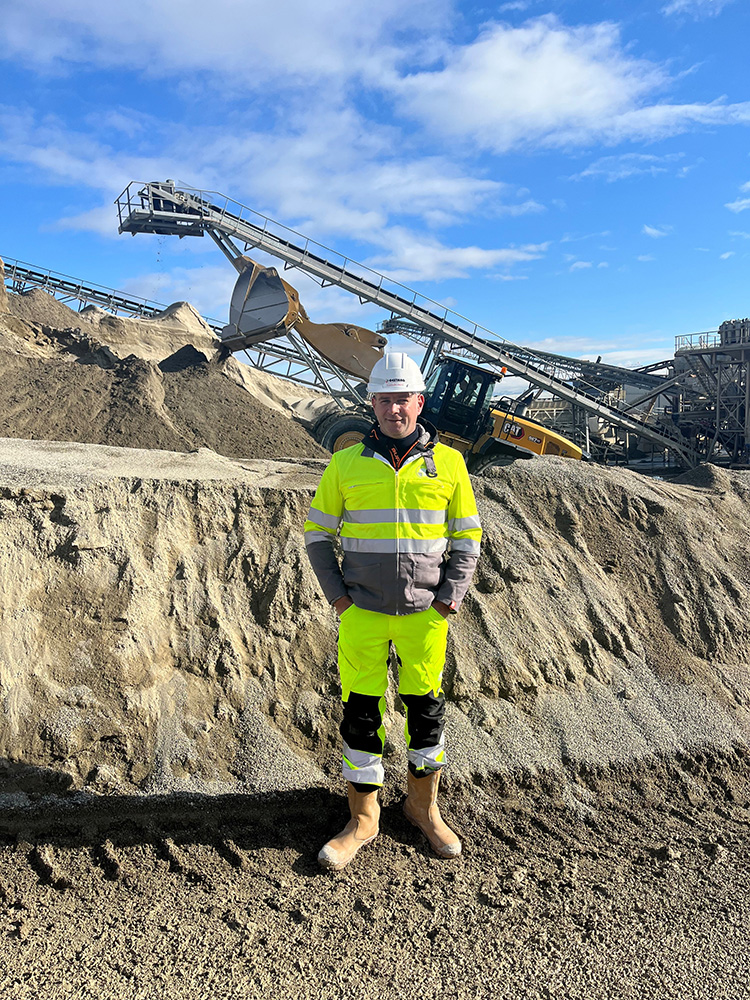
Suppliciau, who joined Gestrag/GESA from Implenia, another leading Swiss civil engineering company, in June 2022, says the new extraction site has around 15 million m³ of deposits, with GESA having a licence to extract and process material until at least 2042. The new site’s 9m-12m-thick overburden layers will be used to refill the retired extraction area in GESA’s current quarry site.
“We sell gravel for all sorts of concrete. We also produce our own concrete and have two local partners producing it with our material,” continues Suppliciau. “We also produce different-sized gravel products from a mix of fines and sand for [civil works] pipes. We have mostly very local customers, with some French customers taking material that we cannot treat. Treating the gravel we receive from outside Montfleury is our priority. A lot of demolition works are taking place in Geneva as there is no space to expand, and that material needs to be thoroughly treated before it can be reused. Things are very different now from when I arrived in Geneva six years ago. Then, I was surprised at the lack of building material waste being recycled.”

Suppliciau says a lot of investment is currently going into Geneva’s Green Village, the city’s first real estate project (and one of three pilot projects in Switzerland) to follow One Planet Living principles, such as maximising the use of recycled building materials and achieving the lowest works’ carbon footprint possible. A partnership initiative involving landowner WCC (World Council of Churches), developer and contractor Implenia, and architects LRS (Lin Robbe Seiler), group 8, and dl-a (Designlab Architecture), Green Village includes a residential building, offices, a hotel, and a conference centre. Each project building is named in honour of a major international agreement on sustainable development.
“The Swiss government is applying pressure on the construction sector to reduce CO2 emissions. But it doesn’t really apply to us, given our recycling business. Investing in new equipment for our quarry fleet also reduces this pressure, given their very low emissions. We typically replace each of our machines when they reach 6,000 to 10,000 operating hours.
“I would like to develop a system which would allow us to trace the carbon footprint of all the construction waste and demolition rubble we process into resaleable products right back to their original source. This could then be given to the customer purchasing from us. This would be good for our and our customers’ green credentials. It also builds trust between us. If our system could also change the molecular structure of the material to make it greener as we process it, that would be even better.”


